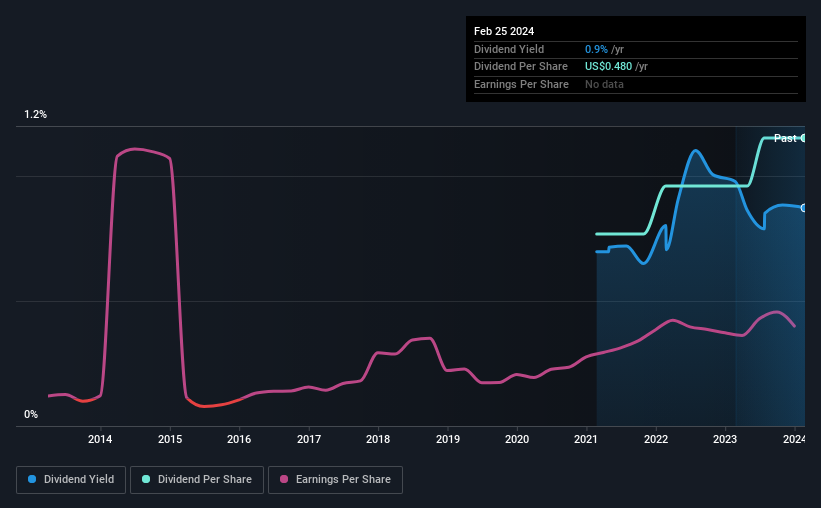The St. Joe Company (NYSE:JOE) Looks Interesting, And It's About To Pay A Dividend
Regular readers will know that we love our dividends at Simply Wall St, which is why it's exciting to see The St. Joe Company (NYSE:JOE) is about to trade ex-dividend in the next four days. The ex-dividend date is usually set to be one business day before the record date which is the cut-off date on which you must be present on the company's books as a shareholder in order to receive the dividend. The ex-dividend date is important as the process of settlement involves two full business days. So if you miss that date, you would not show up on the company's books on the record date. Thus, you can purchase St. Joe's shares before the 1st of March in order to receive the dividend, which the company will pay on the 27th of March.
The company's next dividend payment will be US$0.12 per share, and in the last 12 months, the company paid a total of US$0.48 per share. Based on the last year's worth of payments, St. Joe has a trailing yield of 0.9% on the current stock price of US$55.02. We love seeing companies pay a dividend, but it's also important to be sure that laying the golden eggs isn't going to kill our golden goose! As a result, readers should always check whether St. Joe has been able to grow its dividends, or if the dividend might be cut.
See our latest analysis for St. Joe
Dividends are typically paid out of company income, so if a company pays out more than it earned, its dividend is usually at a higher risk of being cut. St. Joe paid out a comfortable 33% of its profit last year.
Click here to see how much of its profit St. Joe paid out over the last 12 months.
Have Earnings And Dividends Been Growing?
Companies with consistently growing earnings per share generally make the best dividend stocks, as they usually find it easier to grow dividends per share. If earnings decline and the company is forced to cut its dividend, investors could watch the value of their investment go up in smoke. That's why it's comforting to see St. Joe's earnings have been skyrocketing, up 21% per annum for the past five years. St. Joe is paying out less than half its earnings and cash flow, while simultaneously growing earnings per share at a rapid clip. Companies with growing earnings and low payout ratios are often the best long-term dividend stocks, as the company can both grow its earnings and increase the percentage of earnings that it pays out, essentially multiplying the dividend.
Another key way to measure a company's dividend prospects is by measuring its historical rate of dividend growth. St. Joe has delivered 14% dividend growth per year on average over the past three years. It's exciting to see that both earnings and dividends per share have grown rapidly over the past few years.
The Bottom Line
Is St. Joe an attractive dividend stock, or better left on the shelf? Typically, companies that are growing rapidly and paying out a low fraction of earnings are keeping the profits for reinvestment in the business. This is one of the most attractive investment combinations under this analysis, as it can create substantial value for investors over the long run. In summary, St. Joe appears to have some promise as a dividend stock, and we'd suggest taking a closer look at it.
On that note, you'll want to research what risks St. Joe is facing. Every company has risks, and we've spotted 1 warning sign for St. Joe you should know about.
Generally, we wouldn't recommend just buying the first dividend stock you see. Here's a curated list of interesting stocks that are strong dividend payers.
Have feedback on this article? Concerned about the content? Get in touch with us directly. Alternatively, email editorial-team (at) simplywallst.com.
This article by Simply Wall St is general in nature. We provide commentary based on historical data and analyst forecasts only using an unbiased methodology and our articles are not intended to be financial advice. It does not constitute a recommendation to buy or sell any stock, and does not take account of your objectives, or your financial situation. We aim to bring you long-term focused analysis driven by fundamental data. Note that our analysis may not factor in the latest price-sensitive company announcements or qualitative material. Simply Wall St has no position in any stocks mentioned.

